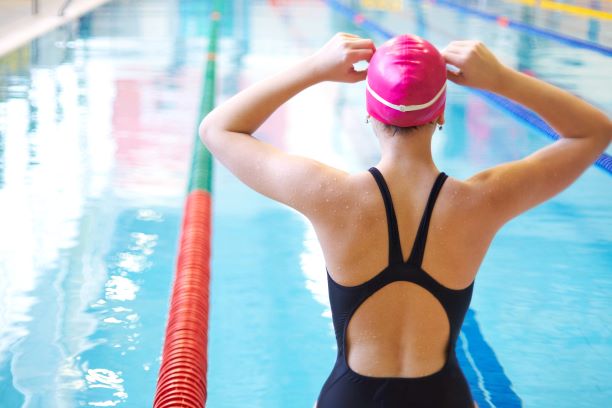Three lessons a triathlete learned on his return to swimming during the COVID-19 pandemic
What can you learn from a long break from swimming?
 Photo by:
Getty Images
Photo by:
Getty Images
First off, I make no pretenses at being an accomplished swimmer. I was the eight-year-old who failed Red Cross pre-beginner. Over the next two decades, my swim progress was glacial. In my first triathlon, I was reduced to the elementary backstroke for the final four-fifths of the swim after an eternity of aquaslothic thrashing. Do you think I was last out of the water?
My magic moment came as I put on a wet-suit for the first time. The neoprene buoyed my legs and confidence. Emerging out of Lake Okanagan, still alive, in my first Ironman, is one of my greatest athletic achievements.
Unwelcome Opportunity
Fast forward 20 years, to the ides of March. My last pool swim was a long one. With about five months until the full-distance race I had planned, things were looking promising. Using every possible water toy available, I managed 3.5 km in just under 1:10. Then, the lock-down locked the doors to most pools on the planet.
I started lake swimming in April. My strategy of “just swimming” two or three times a week paid off, as I posted a draft-free 1:20 on August 30th at CovidMan in Penticton. Yes, it really happened! Steve King was there. There were t-shirts. I have yet to see anyone sporting a CovidMan tattoo though. Maybe it had something to do with having only four finishers.
With the door to our local pool still shut, September, October and November were chilly indeed. My three swims a week turned to two. And then to one.
In December the pool reopened. After successfully booking a swim lane I returned to the pool on December 28.
Test Time
After a knowing nod to the not-overworked lifeguard, I hobbled across the pool deck, spat on my goggles, adjusted everything that a man can adjust, entered the water, and hit start on my cretaceous-era Ironman stopwatch.
Feedback was swift. My shoulders screamed “welcome back” in a most inhospitable way but, otherwise, I felt adequate. My breathing responded solidly to the unsustainable pace.
“I think I can crack 10 minutes,” I thought to myself.
Then came the sixth length. My form simply fell apart.
Knowing I needed a baseline, however crappy it was, became my prime motivation to finish off the remaining laps. The watch confirmed what my body had said: you are slow – 10:12, 30 seconds slower than an average time pre-Covid, and a full minute slower than my personal best.
The Lessons
So, what can be learned from this once-in-a-lifetime experiment?
- Swim training works. Sometimes I get so discouraged I never want to swim again, thinking I wouldn’t be much slower if I didn’t train. I now know this is poppycock.
- It’s not the cardio that is holding you back. Although I didn’t swim at all for that month prior to the test, I did a lot of running and biking and, for my whole time trial, my breathing was totally in control. Rebuilding my swimming will be mainly about reintroducing my muscles to those swim-specific movements.
- If it ain’t fun it ain’t gonna happen. At this point in my triathlon life, my fastest years are behind me, but my best years are still ahead. By incorporating elements of fun into the swim sessions, I’ll be more motivated to get back to the pool consistently.
Sometimes the best lessons you learn in life are from experiences that you have no control over. The COVID-19 pandemic has forced many of us to stop doing things, or to do things differently. We can, however, use this unwelcome opportunity to adapt, reflect, and become more resilient athletes in the future.
Kevin Heinz is a regular contributor to Triathlon Magazine Canada and the host of the endurance sports podcast Fitspeak.
